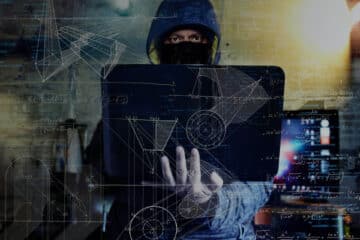Introduction
In a world where content is king in the digital realm, trust is paramount. What if everything we see and hear can be entirely manufactured? Welcome to the creepy emergence of deep fakes—artificially created media by artificial intelligence that can accurately impersonate real people through appearance, voice, and motion. What was once a captivating innovation in visual effects and entertainment has now been hijacked by cybercriminals, scammers, and political actors. Deepfake scams pose a rising threat, from bank fraud to identity theft and interference in elections—and they’re more realistic than ever.
With these dangers increasing, the ultimate question is: how do we know what’s real and what’s not? Here in this blog, we’ll dissect the history of deepfakes, discuss their sinister applications, and—most crucially—arm you with ways to identify them before they fool you.
Where seeing is No Longer Believing Anymore
Understanding Deepfakes: More Than Just Face-Swapping
Deepfakes are the result of artificial intelligence, specifically machine learning methods such as Generative Adversarial Networks (GANs). These models learn from vast amounts of images, videos, or audio to create extremely realistic copies of human features and voices.
At first, deepfakes were primarily employed in entertainment—imagine placing an actor’s face on a different body for a film scene. But as the technology grew better and easier to use, its abuse skyrocketed. Now, with a few minutes of a person’s voice or video, a con artist can generate convincing impersonations that are all but impossible to tell from authentic recordings.
This development has made it unnecessary for scammers to use phishing emails or awkward phone calls. They can now send video messages from “your boss,” voice calls from “a loved one,” or even social media posts that appear to be from your favorite celebrity—all fake, all extremely convincing.
Real-World Cases: When Deepfakes Hit Home
Although deepfakes may still sound like they are from a science fiction film, they’ve already inflicted some very real harm on industries and personal lives.
Corporate Fraud: In 2019, a British energy firm was tricked out of $243,000 when an employee was called by someone who was impersonating the CEO. The scammer demanded a quick transfer of funds to a claimed supplier—except it was a deepfake audio impersonator who was actually scamming the company.
Romance and Crypto Frauds: In 2024, some U.S. citizens were cheated out of money and investments in non-existent cryptocurrency ventures by people employing deepfakes on videos and dating website profiles. The victims thought they were in real relationships.
Political Misuse: In India and Slovakia, among other nations, politicians’ deepfakes have become viral sensations around election time, manipulating them into making outlandish statements or promises, influencing public opinion, and possibly changing democratic results.
These are not unusual cases—these are on the rise, and each new scam is becoming more sophisticated, targeting both institutions and individuals.
Why Deepfake Scams Are Successful: The Psychology of Manipulation
The most frightening thing about deepfake scams is just how realistic they are. Our brains are predisposed to trust what we can see and hear. When somebody looks and sounds like a familiar person—especially an authority figure—we tend to believe them uncritically.
Scammers exploit this blind trust. By mimicking a trusted voice or face, they lower our defenses, prompting emotional responses rather than rational ones. Whether it’s the urgency of a fake CEO demanding a wire transfer, or a video of a celebrity endorsing a product, deepfakes create a false sense of legitimacy.
Furthermore, in our hurried, information-overloaded society, we hardly ever pause to double-check what we observe. We scroll, skim, and share—sometimes without fact-checking. That is why disinformation and hoaxes go viral when deepfakes are part of the mix.

Important Indications You’re Witnessing (or Hearing) a Deepfake
Despite the progress deepfakes have made, they are still imperfect. Here are some warning signs to watch for:
Unnatural Facial Expressions: Observe closely the way the eyes blink, the mouth opens, or the way the head tilts. Deepfakes tend to misjudge these micro-expressions.
Strange Audio Quality: Deepfake audio can sound too smooth or robotic. There could be unnatural pauses or incongruent tones.
Lack of Eye Contact: Another weakness found in deepfake videos is unusual or irregular movement of the eyes. The target may not keep direct eye contact or have a forced stare.
No Context or Source: If a video magically pops up without reliable sources or isn’t posted from the verified account of the person, it’s advisable to question.
Too Good (or Bad) to Be True: If it’s surprising, too thrilling, or appears too unbelievable—stop. Scammers use emotion to cloud judgment.
Tools and Techniques to Detect Deepfakes
Fortunately, as deepfake technology has improved, so have detection tools. Here are a few that can assist:
Microsoft Video Authenticator: Examines images and videos for characteristic evidence of deepfake manipulation such as grayscale blending or face mismatches.
Deepware Scanner: A browser plugin that allows users to upload videos to be deepfaked and analyzed. It employs machine learning to assess authenticity.
Vastav AI: India-made, Vastav employs sophisticated algorithms and facial recognition technology to detect inconsistencies in video and audio information.
Reverse Image Search: Still effective. If you find a video or photo online, reverse search to find where else it shows up. Can assist in authenticating origin.
Digital Watermarking and Blockchain: A few are also looking at digital authenticity stamps based on blockchain to validate integrity of content.
That being said, human intuition is still your first line of defense. When something doesn’t smell right, believe that inner voice and check again.
Master SOC Analysis
Are you passionate about cybersecurity and ready to build a career as a SOC Analyst? Look no further!
GradeSpot IT Solutions in Hyderabad offers expert-led training designed to make you industry-ready.
How to Protect Yourself and Your Business
Deepfake cons can be super-advanced, but safeguarding yourself begins with fundamental awareness and doubt.
For Individuals:
- Approve requests: Particularly those demanding money, private data, or rapid action.
- Enable two-factor authentication on critical accounts.
- Be careful about what you post online—particularly video and voice material.
- Educate your family members on scams, especially elderly parents or children, who may be more susceptible.
For Businesses:
- Train staff to identify deepfake attempts.
- Implement verification procedures for financial transactions—do not depend on voice or video verification.
- Invest in fraud detection software that incorporates AI-based checks.
- Create a response plan in the event a deepfake impacts your brand or leadership.
- Scams thrive in confusion. Clear protocols and awareness reduce that risk significantly.
The Future of Deepfakes: Regulation, Ethics, and AI’s Dual Edge
As deepfakes become more common, governments and tech companies are stepping in.
- The UK’s Online Safety Act mandates faster takedown of harmful digital content.
- The EU’s AI Act includes provisions for labelling deepfakes clearly, especially in political or advertising contexts.
- Global giants such as YouTube, TikTok, and Meta are building AI-driven moderation tools to identify and cut off deepfakes.
On the ethics front, there is a growing debate. Deepfakes can be employed for education, entertainment, and accessibility purposes (such as voice synthesis for the disabled), but the risks are indistinguishable. A balance between innovation and abuse will need constant discourse between technologists, policy makers, and the public.
Conclusion: Remaining Vigilant in a World of Artificial Truth
We’re coming into a world where not all that we hear or see can be accepted at face value. Deepfakes erase the distinction between fact and fiction, opening up potent new weapons for fraudsters and manipulators. But by learning how they work, knowing the signs, and developing digital scepticism, we can remain one step ahead.
The onus doesn’t lie with tech firms or governments alone. It’s on all of us—users, consumers, and digital citizens—to pause, check sources, and not be so quick to trust.
After all, in a world of persuasive falsehoods, the truth hinges on those who look for it.




